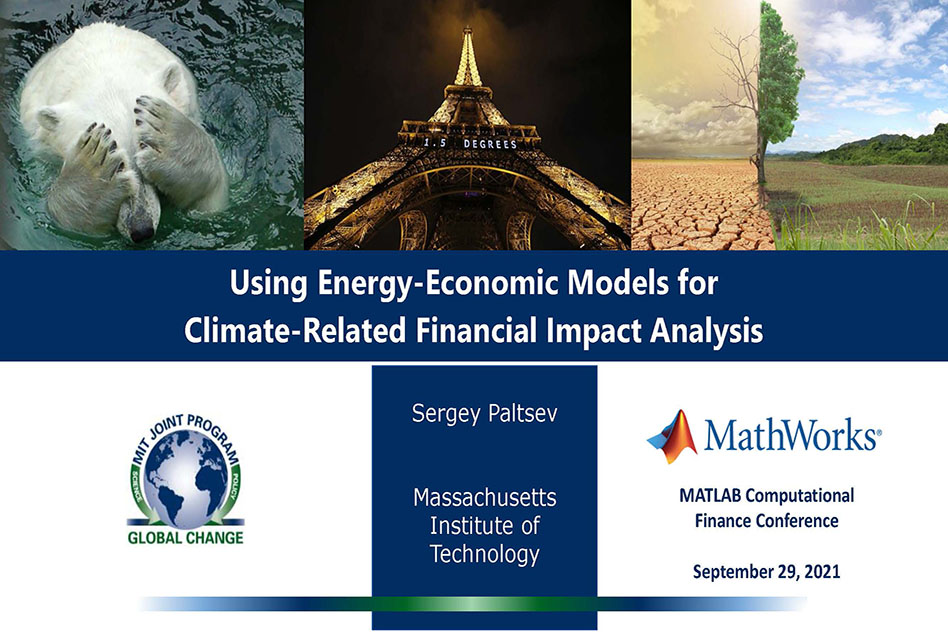
Held September 27-30 online, the MATLAB Computational Finance Conference 2021 convened industry professionals to illustrate practical applications of MATLAB and provide advice to practitioners on topics ranging from artificial intelligence to climate risk. In one of three featured presentations, MIT Joint Program Deputy Director Sergey Paltsev discussed the use of energy-economic models for climate-related financial impact analysis.
According to Paltsev, climate change poses financial risks that arise from shifts in political, technological, social and economic landscapes that are likely to occur during the transition to a low-carbon economy. One of the global community’s most significant contemporary challenges is the need to satisfy growing energy and food demand while simultaneously achieving very significant reductions in greenhouse gas emissions and sustainable development. In pursuing this goal, decision-makers need to make strategic choices that address both physical risks (damage from extreme events such as fires, floods, droughts and sea-level rise) and transition risks (financially consequential shifts in political, technological, social and economic landscapes in the transition to a low‑carbon future). Energy-economic models can be used to support decision-makers in quantifying these risks by integrating across systems, sectors and scales.
In his presentation Paltsev described a framework developed at the Joint Program for addressing climate-related financial risks where scenario analysis plays a key role in climate risk management.

